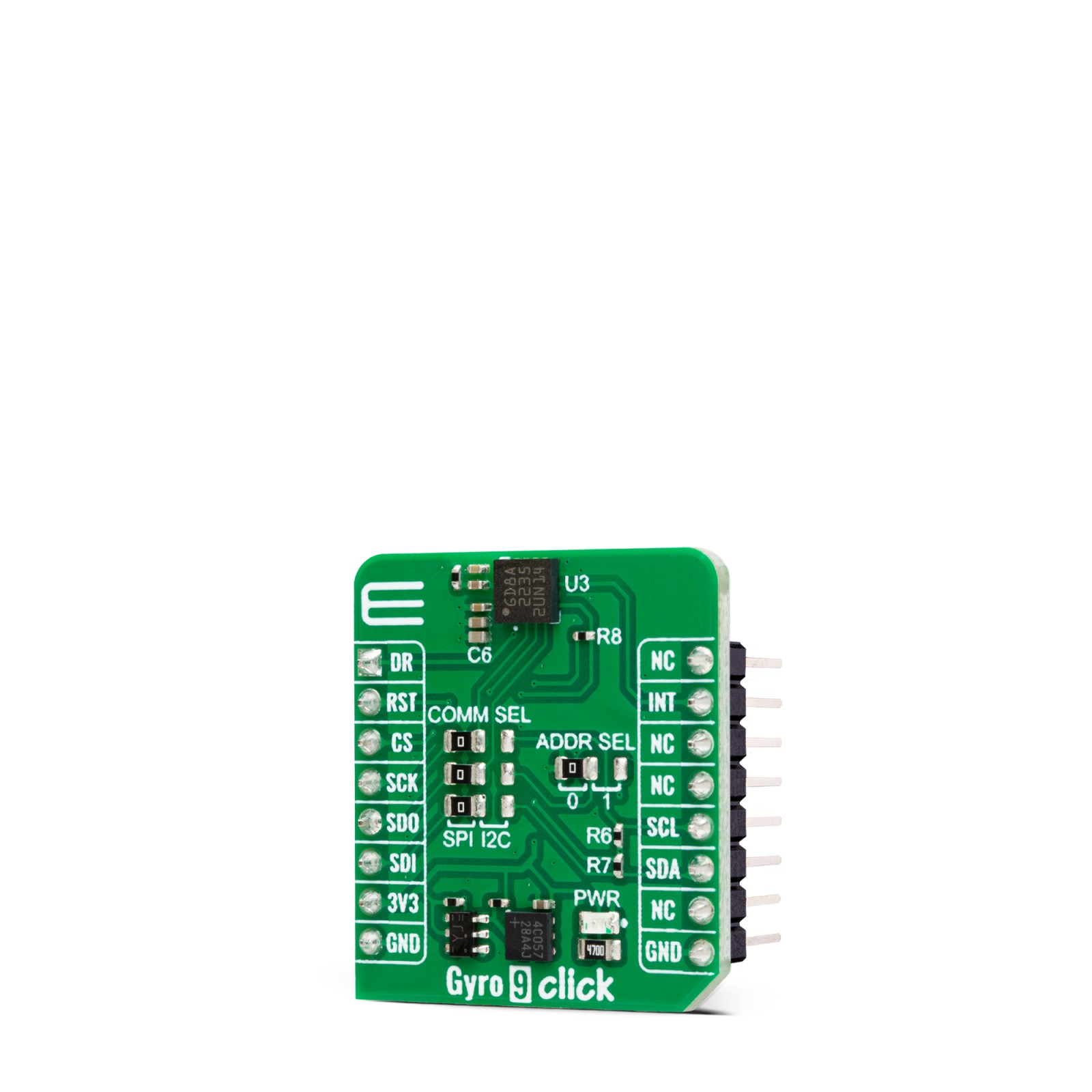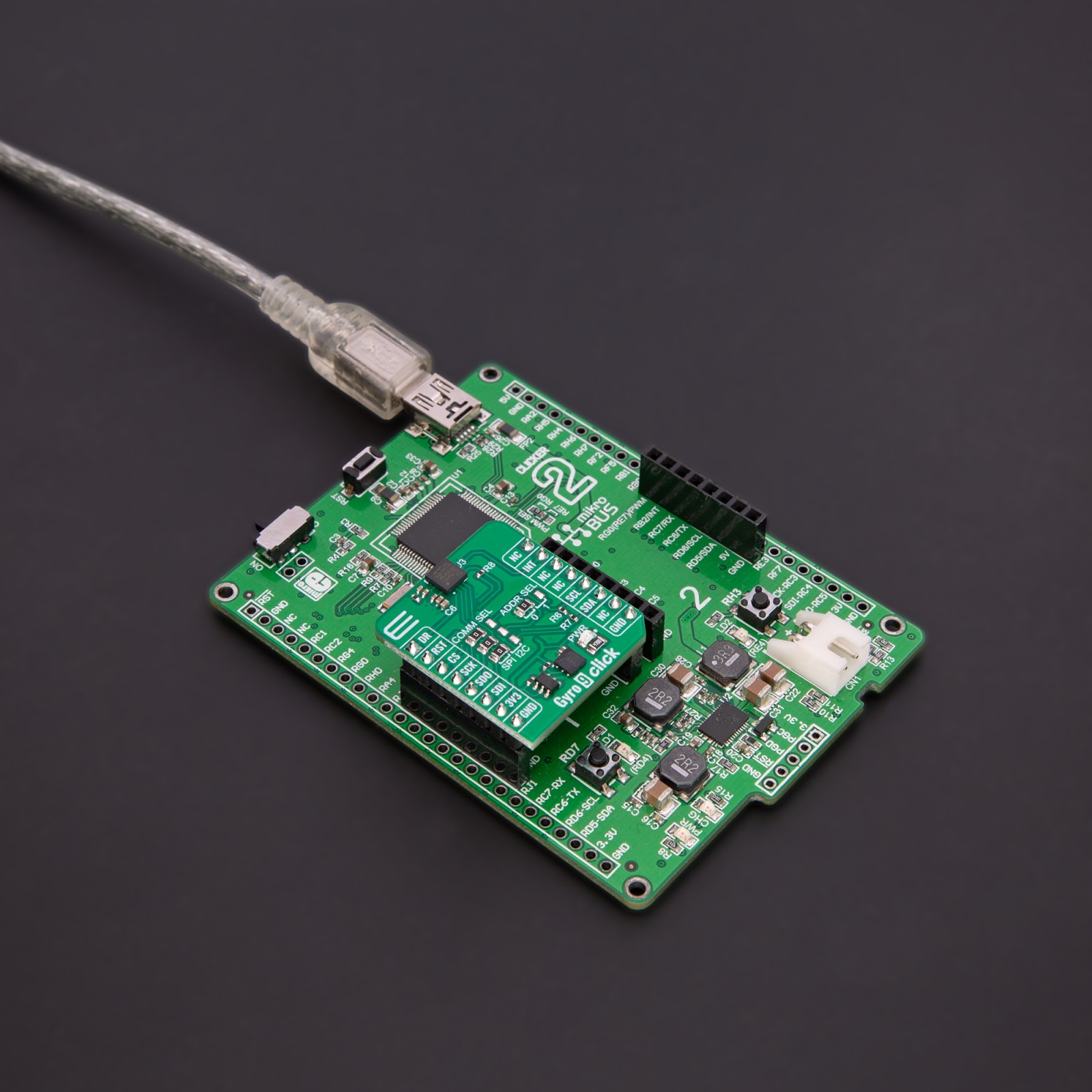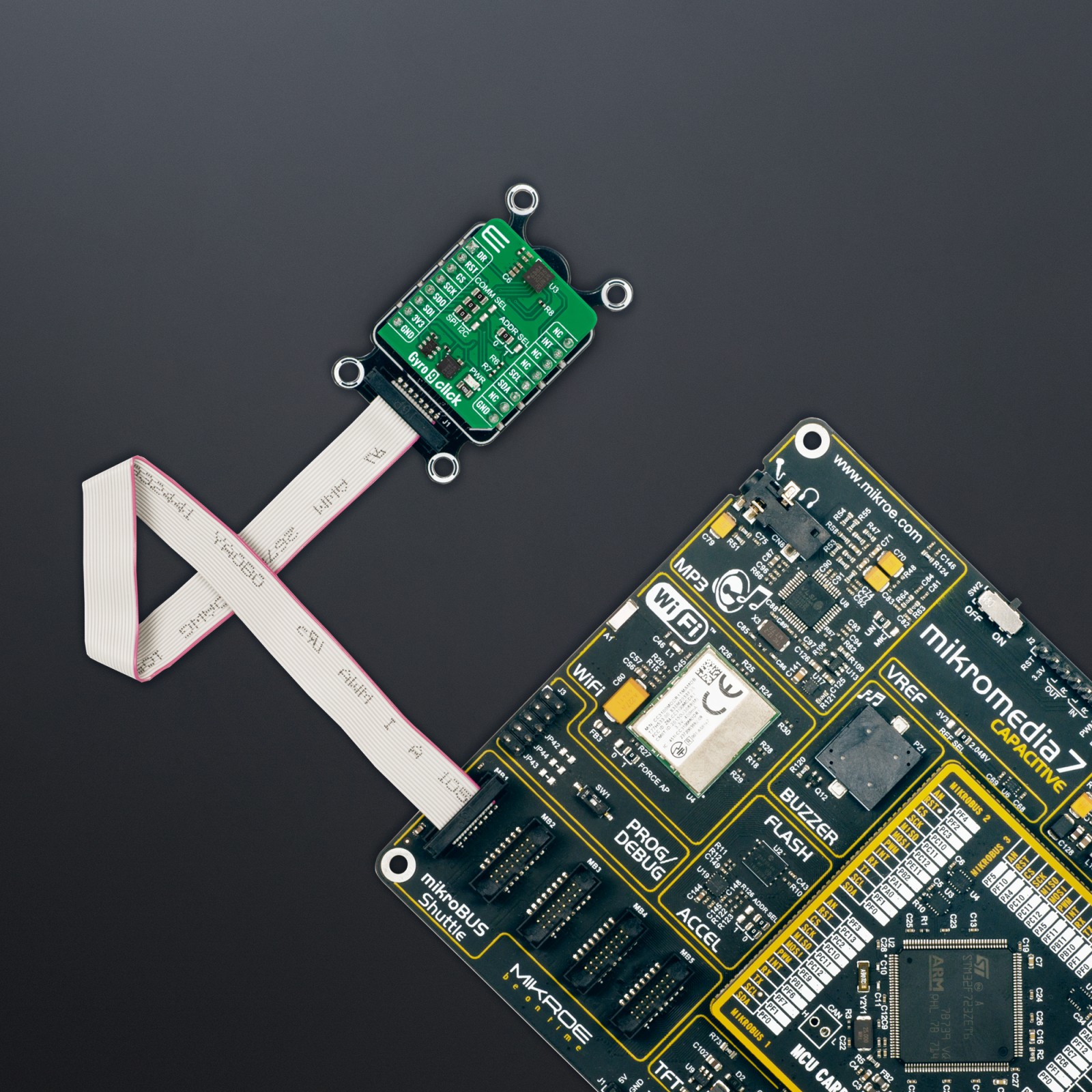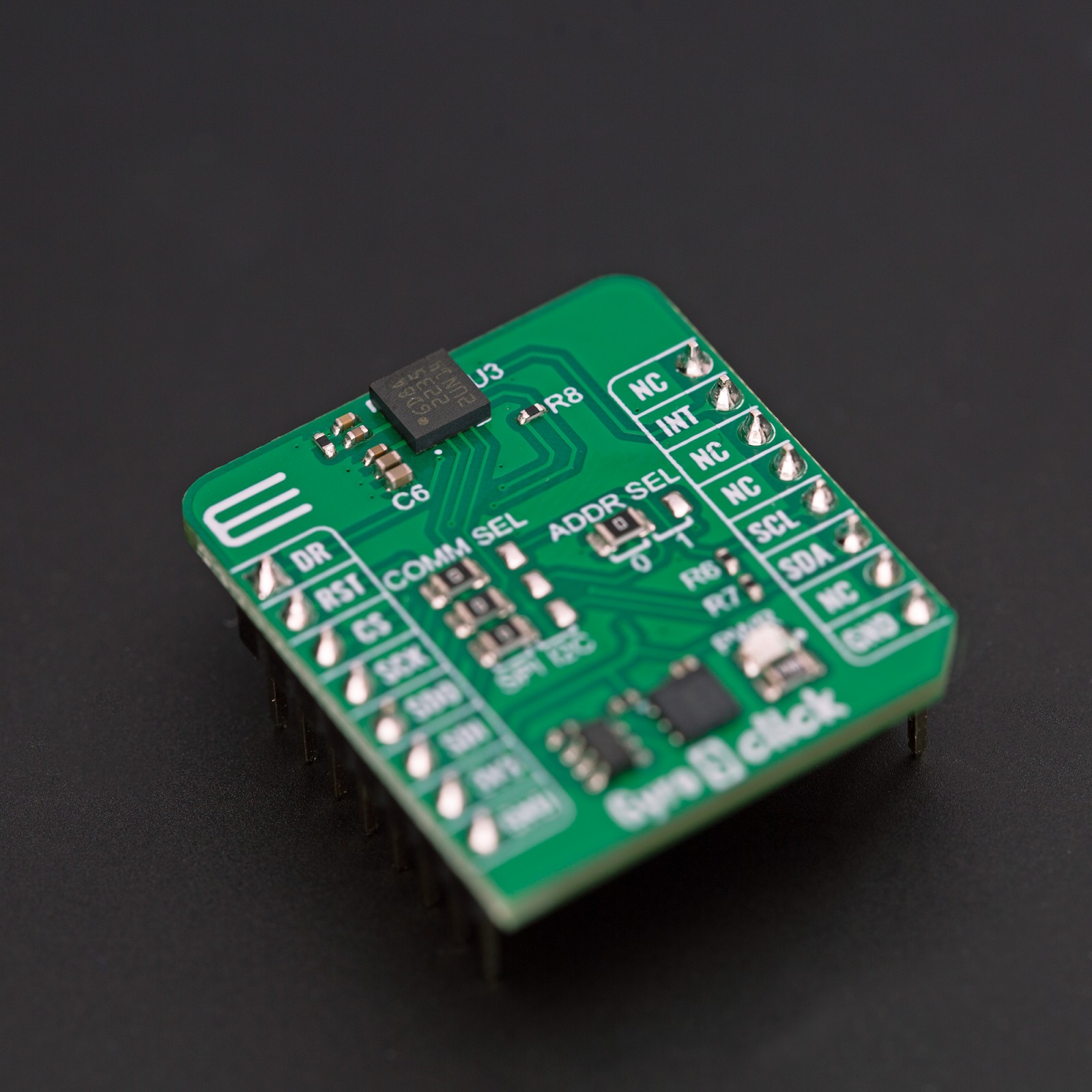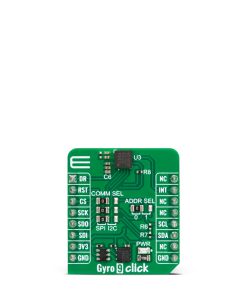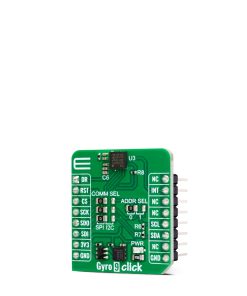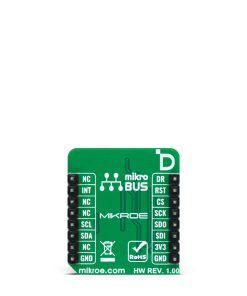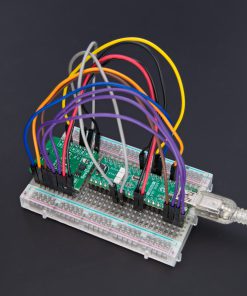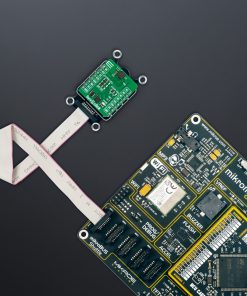Gyro 9 Click
R935.00 ex. VAT
Gyro 9 Click is a compact add-on board that contains a high-performance gyroscope. This board features the A3G4250D, a MEMS motion sensor from STMicroelectronics. It is a low-power 3-axes digital output gyroscope that provides unprecedented stability at zero rate level and sensitivity over temperature and time and is equipped with an embedded temperature sensor. The gyroscope has a 16-bit rate value data output with an 8-bit compensation temperature data output. This Click board™ makes the perfect solution for the development of in-dash car navigation, telematics, e-tolling, motion control with MMI (man-machine interface), and more.
Gyro 9 Click is fully compatible with the mikroBUS™ socket and can be used on any host system supporting the mikroBUS™ standard. It comes with the mikroSDK open-source libraries, offering unparalleled flexibility for evaluation and customization. What sets this Click board™ apart is the groundbreaking ClickID feature, enabling your host system to seamlessly and automatically detect and identify this add-on board.
Stock: Lead-time applicable.
| 5+ | R888.25 |
| 10+ | R841.50 |
| 15+ | R794.75 |
| 20+ | R764.83 |


